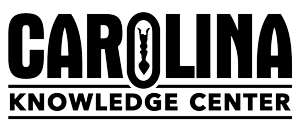Schools, science specialists, and teachers are all involved in ensuring that their curricula meet national or state standards for Science, Technology, Engineering, and Math (STEM). Most school systems are successfully incorporating the S, T, and M components into their classrooms, but many find the E practices to be particularly daunting.

Carolina STEM Challenge® kits are designed to fill this need, and they do so using an approach that is effective, easy, and fun!
Students are presented with an engineering problem, highlighting and identifying science concepts and skills relevant to potential solutions. For example, the Chemical Reaction Rocket Kit challenges students with “What is the best way to change a chemical system in order to maximize the range of a chemical rocket?”
Working in teams, students research and design a solution. They build a prototype, test it, brainstorm and implement design improvements, and assess their design’s success. Throughout this process students are learning to collaborate and address challenges using engineering design practices. To conclude the project, teams engage in friendly competition to determine the best design solution.
The approach used in Carolina STEM Challenge® kits is part of a comprehensive solution that meets the needs of the school system, teachers, and students:
- School systems can incorporate the engineering practices of the Next Generation Science Standards* (NGSS) or state standards into their STEM curricula.
- Teachers can integrate engineering practices into their curricula without needing to design an entirely new lesson or unit.
- Students learn science and engineering practices in a fun format that engages and challenges them.
School Academic Standards
Carolina STEM Challenge® kits are available for a variety of subjects. The NGSS standards met by a kit are clearly listed in the kit’s teacher’s manual (and on Carolina.com) and described so that selecting the kit that best meets a specific need is a straightforward process. Also described are the discipline-specific core ideas, science and engineering practices, and crosscutting concepts that correlate with the standard.
The preview manual on Carolina.com provides additional information that can be helpful in kit selection, such as student performance objectives, applied science concepts, and the time requirements.

These tools make it easy for schools to evaluate and identify the Carolina STEM Challenge® kits that best fit and complete their curricula.
Teacher Tools and Support
Carolina STEM Challenge® kits are easy to implement and use, even for teachers who are new to STEM. The materials, instructions, tips, and other information in each kit are designed to support teachers as they integrate engineering practices into their existing science curriculum.
Teaching the Engineering Cycle
To assist with the kits’ engineering design focus, each kit’s teacher’s manual includes a Teaching the Engineering Cycle section. This section reminds teachers of the overall engineering cycle, the purpose of each step of the cycle, and the activities included in each step of the cycle. Additional support is available in free digital resources such as Engineering and Design Vocabulary, How to Plan an Engineering Design Challenge, and the Engineering and Design Process Worksheet. These aids help teachers prepare and become comfortable with the processes their students encounter during the project.
Teacher Tools
Carolina STEM Challenge® kits provide teachers with the tools and resources they need to guide their students through the project. Each kit includes the materials unique to the project, thus limiting the teacher-provided materials to common items such as tape, rulers, paper towels, and so forth. Students and teacher can, however, bring in additional supplies for extended design and testing. Each kit’s comprehensive teacher’s manual provides a project overview, NGSS correlation, performance objectives, time requirements, applied science concepts, safety considerations, digital resource guide, and materials list. The manual proceeds with parallel page spreads showing the applicable student guide pages on the left and point-of-use teacher information on the right. This layout enables teachers to easily cross-reference teaching tips, notes, and assessments during their preparation time.
The manual’s Teaching Guide section contains clear instructions and supplementary information such as:
- Warm-ups and demonstrations to guide prototype builds
- Scoring and grading rubrics
- Tips for notebooking, differentiated instruction, and student help
- Literacy, science, technology, engineering, and math extensions
- Digital resources, including fill in student answer sheets, editable assessment questions, and graphics
Digital Resources
Each Carolina STEM Challenge® kit comes with a free 1-year subscription to digital resources delivered on Carolina’s eLearning platform, CarolinaScienceOnline.com. Resources include the teacher’s manual, student guide, fill in answer sheets, editable assessment questions, whiteboard resources, and procedural videos.
With Carolina STEM Challenge® kits, teachers find everything they need at their fingertips to successfully incorporate engineering practices into their existing science curricula. Integrating STEM into the classroom has never been easier!
Student Engagement and Success
Carolina STEM Challenge® kits engage and inspire students with their fun design challenges and teambased, tournament-style format. They even engage students who might not think they are “good at” science.
The kits’ standards alignment provides students with the academic essentials they need to successfully advance and complete their STEM studies. And while students are busy applying engineering practices to real-world phenomena, they are also building skills in:
- Defining problems
- Developing and using models Planning and carrying out investigations
- Analyzing and interpreting data
- Using mathematics and computational thinking
- Designing solutions
- Engaging in argument from evidence
- Obtaining, evaluating, and communicating information
These valuable skills are also transferrable to other areas of study and endeavors, and will serve students well throughout their lives.
Connect with Us

*Next Generation Science Standards® is a registered trademark of Achieve. Neither Achieve nor the lead states and partners that developed the Next Generation Science Standards were involved in the production of, and do not endorse, these products.




